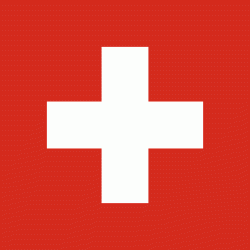Wiedlisbach
Wiedlisbach is a municipality in the Oberaargau administrative district in the canton of Bern in Switzerland.
In 1974, the Wakker Prize was bestowed on Wiedlisbach for the development and preservation of its architectural heritage.
In the mid 13th century Count Ludwig the Elder von Frohburg built the fortified village of Wiedlisbach to collect tolls and host markets along the road to Zofingen. The village was built as rectangle with a large central market plaza astride the east-west running road. A combination tower house and defensive tower, known as the Städtliturm, was built in the north-west corner, and likely served as a residence of the count's local representative. The village wall, up to 9 m tall and 1.7 m thick, had two gates, the Biel gate to the west and the Basel gate to the east. The village was first mentioned in 1275 as oppidum or municipium Wietilspach.
During the 13th and 14th century a local noble family, the von Wiedlisbach family, appeared in the village, probably in service to which ever noble family owned it. When the Frohberg family died out, Wiedlisbach passed to the Counts of Neuchâtel-Nidau in the late 13th century. Count Rudolph of Neuchâtel-Nidau appears in the record as ruler of nearby Bipp Castle in 1297 and in 1313 was documented as ruling over Wiedlisbach. In 1375 it passed into the estates of the Homberg/Thierstein family and was attacked by a band of Gugler knights. A few years later it was acquired by the Kyburgs. However, after a disastrous Kyburg raid in 1383 led to the Burgdorferkrieg and poverty for the family, Wiedlisbach was sold to Bern and Solothurn in 1406. In 1463 it was acquired wholly by Bern and has remained part of the Canton of Bern since then.
During the Swiss peasant war of 1653, Wiedlisbach joined the uprising. The uprising was quickly suppressed and on 5 June 1653 the town fell to the attacking government troops. However, the town walls, gate houses and tower were not destroyed. The victorious Bernese troops plundered the town and took away the wooden gates. The gate towers remained intact but open until 1827, when they were finally demolished to make way for new roads.
In 1974, the Wakker Prize was bestowed on Wiedlisbach for the development and preservation of its architectural heritage.
In the mid 13th century Count Ludwig the Elder von Frohburg built the fortified village of Wiedlisbach to collect tolls and host markets along the road to Zofingen. The village was built as rectangle with a large central market plaza astride the east-west running road. A combination tower house and defensive tower, known as the Städtliturm, was built in the north-west corner, and likely served as a residence of the count's local representative. The village wall, up to 9 m tall and 1.7 m thick, had two gates, the Biel gate to the west and the Basel gate to the east. The village was first mentioned in 1275 as oppidum or municipium Wietilspach.
During the 13th and 14th century a local noble family, the von Wiedlisbach family, appeared in the village, probably in service to which ever noble family owned it. When the Frohberg family died out, Wiedlisbach passed to the Counts of Neuchâtel-Nidau in the late 13th century. Count Rudolph of Neuchâtel-Nidau appears in the record as ruler of nearby Bipp Castle in 1297 and in 1313 was documented as ruling over Wiedlisbach. In 1375 it passed into the estates of the Homberg/Thierstein family and was attacked by a band of Gugler knights. A few years later it was acquired by the Kyburgs. However, after a disastrous Kyburg raid in 1383 led to the Burgdorferkrieg and poverty for the family, Wiedlisbach was sold to Bern and Solothurn in 1406. In 1463 it was acquired wholly by Bern and has remained part of the Canton of Bern since then.
During the Swiss peasant war of 1653, Wiedlisbach joined the uprising. The uprising was quickly suppressed and on 5 June 1653 the town fell to the attacking government troops. However, the town walls, gate houses and tower were not destroyed. The victorious Bernese troops plundered the town and took away the wooden gates. The gate towers remained intact but open until 1827, when they were finally demolished to make way for new roads.
Map - Wiedlisbach
Map
Country - Switzerland
 |
 |
| Flag of Switzerland | |
Switzerland is geographically divided among the Swiss Plateau, the Alps and the Jura; the Alps occupy the greater part of the territory, whereas the Swiss population of approximately 8.7 million is concentrated mostly on the plateau, where the largest cities and economic centres are located, including Zürich, Geneva and Basel.
Currency / Language
| ISO | Currency | Symbol | Significant figures |
|---|---|---|---|
| CHF | Swiss franc | Fr | 2 |
| CHE | WIR Bank | 2 | |
| CHW | WIR Bank | 2 |
| ISO | Language |
|---|---|
| FR | French language |
| DE | German language |
| IT | Italian language |
| RM | Romansh language |















